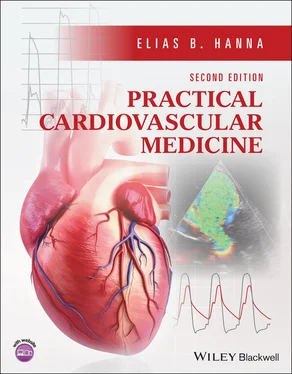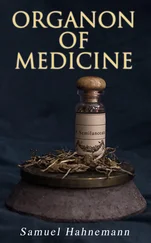18 Part 11: CARDIAC TESTS: INVASIVE CORONARY AND CARDIAC PROCEDURES 34 Angiographic Views: Coronary Arteries and Grafts, Left Ventricle, Aorta, Coronary Anomalies, Peripheral Arteries, Carotid Arteries I. Right coronary artery II. Left coronary artery III. Coronary angiography views. Recognize the angle of a view: LAO vs. RAO, cranial vs. caudal IV. Coronary angiography views. General ideas: cranial vs. caudal views V. Coronary angiography views. General ideas: foreshortening and identifying branches VI. Left coronary views (see Figure 34.8) VII. Right coronary views VIII. Improve the angiographic view in case of vessel overlap or foreshortening: effects of changing the angulation, effects of respiration, and vertical vs. horizontal heart IX. Saphenous venous graft views X. LIMA-to-LAD or LIMA-to-diagonal views XI. Left ventriculography XII. Aortography for assessment of aortic insufficiency XIII. Coronary anomalies XIV. Lower extremity angiography XV. Carotid angiography QUESTIONS AND ANSWERS Further reading 35 Cardiac Catheterization Techniques, Tips, and Tricks I. View for the engagement of the native coronary arteries: RAO vs. LAO II. Design of the Judkins and Amplatz catheters (see Figures 35.2–35.7) III. Engagement of the RCA (see Figure 35.8) IV. How to gauge the level of the RCA origin in relation to the aortic valve level V. What is the most common cause of failure to engage the RCA? What is the next step? VI. Tiger or JR4 catheter engages the conus branch. What is the next step? VII. Left coronary artery engagement: general tips VIII. Management of a JL catheter that is sub-selectively engaged in the LAD or LCx IX. Specific maneuvers for the Amplatz left catheter X. If you feel that no torque is getting transmitted, what is the next step? XI. Appropriate guide catheters for left coronary interventions XII. Appropriate guide catheters for RCA interventions (Figure 35.20) XIII. Selective engagement of SVGs: general tips XIV. Specific torque maneuvers for engaging the SVGs XV. Appropriate catheters for engaging SVGs (see Figure 35.24) XVI. Engagement of the left internal mammary artery graft XVII. Left ventricular catheterization XVIII. Engagement of anomalous coronary arteries XIX. Specific tips for coronary engagement using a radial approach XX. Damping and ventricularization of the aortic waveform upon coronary engagement, and role of side-hole catheters XXI. Technique of right heart catheterization 36 Hemodynamics I. Right heart catheter (see Figure 36.1) II. Overview of pressure tracings: differences between atrial, ventricular, and arterial tracings (Figures 36.2, 36.3, 36.4)III. RA pressure abnormalities IV. Pulmonary capillary wedge pressure (PCWP) abnormalities V. LVEDP VI. Cardiac output and vascular resistances VII. Shunt evaluation VIII. Valvular disorders: overview of pressure gradients and valve area calculation IX. Dynamic LVOT obstruction X. Pericardial disorders: tamponade and constrictive pericarditis (see Figures 36.23, 36.24) XI. Exercise hemodynamics XII.Additional hemodynamic caveats in AF Appendix 1. Advanced hemodynamic calculation: a case of shunt with pulmonary hypertension QUESTIONS AND ANSWERS: ADDITIONAL HEMODYNAMIC CASES References Suggested reading: 37 Intracoronary Imaging 1. INTRAVASCULAR ULTRASOUND (IVUS)I. Image basics II. Plaque types III. Basic IVUS measurements IV. Interpretation of how a severe stenosis may look mild angiographically, yet severe by IVUS; significance of lesion haziness (see Figure 37.16) V. Endpoints of stenting VI. Assessment of lesion significance by IVUS VII. Assessment of left main by IVUS 2. OPTICAL COHERENCE TOMOGRAPHY (OCT) References Further reading 38 Percutaneous Coronary Interventions and Complications, Intra-Aortic Balloon Pump, Ventricular Assist Devices, and Fractional Flow Reserve I. Major coronary interventional devices II. Stent thrombosis, restenosis, and neoatherosclerosis III. Peri-PCI antithrombotic therapy (see Table 38.3) IV. Complex lesion subsets V. Sheath management VI. Post-PCI mortality and coronary complications VII. Femoral access complications VIII. Renal, stroke, and atheroembolic complications IX. Intra-aortic balloon pump (IABP) or intra-aortic balloon counterpulsation X. Percutaneous LV assist device: Impella and TandemHeart XI. Extracorporeal membrane oxygenation (ECMO) XII. Fractional flow reserve (FFR) QUESTIONS AND ANSWERS Further reading
19 Appendix Appendix General review questions QUESTIONSI. NSTEMI and STEMI (Answers on pages 901–903) II. Stable CAD (Answers on pages 903–905) III. Heart failure and cardiomyopathies (Answers on pages 905–909) IV. Valvular disorders (Answers on pages 909–913) V. Arrhythmias (Answers on pages 913–916) VI. Congenital heart disease (Answers on pages 916–918) VII. Peripheral arterial disease- Pulmonary embolism-Pulmonary hypertension (Answers on pages 918–919) VIII. Hypertension and syncope (Answers on pages 919–920) IX. Pregnancy-Chemotherapy and heart disease- Miscellaneous (Answers on pages 920–921) X. ECG (Answers on pages 921, 922) XI. Echocardiography (Answers on pages 923, 924) XII. Additional hemodynamics (Answers on page 925) XIII. Percutaneous coronary intervention and shock (Answers on pages 926–929) XIV. Radiation in the cardiac catheterization laboratory (Answers on pages 929, 930) ANSWERSI. NSTEMI and STEMI II. Stable CAD III. Heart failure and cardiomyopathies IV. Valvular disorders V. Arrhythmias VI. Congenital heart disease VII. Peripheral arterial disease- Pulmonary embolism-Pulmonary hypertension VIII. Hypertension and syncope IX. Pregnancy-Chemotherapy and heart disease- Miscellaneous X. ECG XI. Echocardiography XII. Additional hemodynamics XIII. Percutaneous coronary intervention and shock XIV. Radiation in the cardiac catheterization laboratory
20 Index
21 End User License Agreement
1 Chapter 1 Table 1.1 Tips in MI definition Table 1.2 Clinical features of chest pain Table 1.3 Summary of antithrombotic therapy in ACS. Table 1.4 Long-term therapy >12 months may be considered based on the follow... Table 1.5 Prognosis of NSTEMI. Table 1.6 Angiographic findings in NSTE-ACS and rates of revascularization. 5... Table 1.7 Comparison of the three oral ADP-receptor antagonists. Table 1.8 Comparison of anticoagulants.
2 Chapter 2 Table 2.1 Limitations and contraindications of fibrinolysis. Table 2.2 Revascularization timelines in STEMI. Table 2.3 STEMI TIMI risk score. Table 2.4 Differential diagnosis of shock in MI.
3 Chapter 3 Table 3.1 Indications for stress imaging, as opposed to plain treadmill stre... Table 3.2 Risk stratification with stress testing. Table 3.3 Reasons for superiority of CABG vs. PCI. Table 3.4 Variables analyzed in surgical risk scores (STS and EuroSCORE). Table 3.5 CAD mortality. Table 3.6 Causes and histology of SVG failure.
4 Chapter 4 Table 4.1 Reduction of ventricular volume improves cardiac output through f... Table 4.2 Acute HF therapy according to volume status and peripheral perfusi... Table 4.3 Diagnosis of the underlying mechanism of RV failure and tricuspid ...
5 Chapter 6Table 6.1 Severity of MS.Table 6.2 Classification of AS severity.Table 6.3 Causes of low-gradient AS (AVA ≤ 1 cm 2with a mean gradient < 40 m...Table 6.4 Causes of AVA > 1 cm 2with a mean gradient > 40 mmHg.Table 6.5 Auscultation features
6 Chapter 7Table 7.1 Exam findings in HOCM versus AS.Table 7.2 Athlete’s heart vs. HOCM.
7 Chapter 8Table 8.1 Summary of the approach to wide QRS complex tachycardia.Table 8.2 Management of an acutely presenting, hemodynamically stable AF or ...Table 8.3 Management of focal atrial tachycardia.
8 Chapter 9Table 9.1 Risk of sudden death and cardiac events in patients with long QT s...
9 Chapter 10Table 10.1 Factors predisposing to atrial fibrillation.Table 10.2 Cases in which a rhythm-control strategy should be consideredTable 10.3 Risk factors associated with failure of direct-current cardiover...Table 10.4 Dosage of the drugs used for acute rate control.Table 10.5 Stroke risk in patients with non-valvular atrial fibrillation no...Table 10.6 Major bleeding risk associated with HAS-BLED risk score in patie...Table 10.7 Rate control of AF with or without HF.Table 10.8 Non-Vitamin K oral anticoagulants (NOACS, also called DOACs: dir...
Читать дальше












